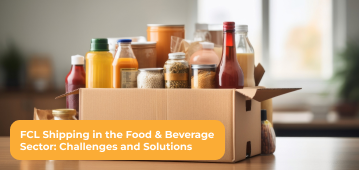What Factors Drive The Trucking Freight Economy
Forecasting volumes, capacity, and rates in the Trucking freight economy are important tasks for freight forwarders and carriers in the industry. Also, since the larger world economy depends pretty much on global freight movement, freight forecasts and the economy are inseparable.
The variables that drive the freight economy, like those that drive the general economy, are too numerous to list. However, we can narrow down the main factors to a few that make a difference. Many of these are obvious, but they bear further consideration.
Economic Activity
The overall economy has an impact on truck demand at the highest level. GDP growth, industrial production, retail spending and consumption, inventory restocking, housing starts, agricultural demand (e.g., produce seasons), auto production, and weather are all important factors driving transportation demand.
GDP (Gross Domestic Product)
Returning to the most basic macroeconomic demand factors, the equation for real GDP can be broken down into consumption (69% of US GDP) + business investment (18%) + government spending (17%) + net exports (-4%). Consumption, business investment (e.g., capital spending and inventories), and net exports all have an impact on transportation, with government spending, which is primarily spent on defence, having a smaller impact.
Truck Capacity
The critical factor on the supply side is capacity. Total available drivers for dispatch are widely regarded as the most important variable in determining trucking market capacity. Trucking rates are determined by the intersection of supply and demand, with the directional movement determined by which party has more bargaining power – carriers or shippers.
Goods that are Both Durable & Non-Durable
The freight markets account for one-third of US consumer spending on goods (both durable and non-durable), restaurant spending, groceries, and consumer packaged goods (CPG). Durable goods include automobiles, furniture, and large appliances, whereas non-durable goods include clothing, food, and fuel.
According to that metric, whether spending on physical goods for consumption in the United States is increasing or decreasing is an important factor influencing freight volumes and rates. We estimate that non-food retail accounts for about 25% of trucking volume in the United States, with food retail accounting for closer to 35% to 40%. Consumer spending is undeniably important in the Trucking freight economy (and particularly for the dry van sector).
Inventories
Inventories play an important role in the freight economy because they must progress from raw materials to goods-in-process to finished goods before being sold at the wholesale or retail levels. Freight shipments occur throughout the inventory production supply chain. The inventory-to-sales ratio is an especially useful metric in transportation; it typically rises when businesses are more optimistic about future demand, but this is not always the case for at least. For example, when there is a rapid decline in demand, as is currently occurring due to the pandemic.
Industrial Production
The output of industries such as manufacturing, metals, mining, and construction is referred to as industrial production. All of these heavy industries require a large number of freight shipments and thus play a significant role in driving the Trucking freight economy. Historically, the volume of freight moving through the transportation system has been closely related to the annualized percentage growth in industrial demand and production.
Construction
Commercial and residential construction are both types of construction. Both are critical indicators in the freight economy. Housing starts, new home sales, existing home sales, and renovations are all important metrics in residential construction. When the volume and frequency of each of these activities increases, so will the demand for related freight (e.g., lumber, roofing materials, paint, etc.).
Energy
Energy (oil and gas drilling and production) is an important factor in the Trucking freight economy, with flatbed trailers accounting for a large portion of the volume by trailer type in this industry. With oil prices hovering around $15 per barrel (and down about 80% year on year as of May 2020), this will clearly be a very depressed industry, for at least a couple of quarters, and thus for related trucking demand.
Agricultural and farming
In terms of agriculture as a factor in the freight economy, total farm output in the United States is estimated to be around $150 billion, according to the United States Department of Agriculture (USDA), accounting for less than 1% of total U.S. GDP ($21.5 trillion). However, 100% of that output is transported by truck at some point during its journey from farm to table, and because much of it is perishable, transportation costs a significant amount of money. Furthermore, much of the produce grown in the United States is grown in places such as California, Florida, and Mexico and must be transported long distances to East Coast population centres where much of it is consumed (and where 35% of our country’s population resides).
Profitability of the freight economy
The intersection of volumes and capacity (i.e., supply and demand) in the form of rates will have a significant impact on the overall profitability of the freight economy. When the economy is hot and freight volumes tied to consumer spending, industrial manufacturing, construction, agriculture, and energy are all increasing in kind, if capacity is tight, rates should soar in the spot market and gradually rise in the contract market. The former situation leads to significant growth in the overall freight economy, which is currently worth approximately $800 billion in the United States (about half for-hire and half private fleets).
Critical Events
Finally, exogenous forces such as port strikes, hurricanes, and other severe weather events are important factors in the freight economy, but their impact is generally sharp but fleeting.
Consumer spending
It propels the American economy, accounting for nearly 70% of GDP. However, two-thirds of that 70% is derived from services (e.g., banking, education, and healthcare), while only one-third is derived from goods.
Because service-oriented consumer businesses are not responsible for moving much freight, the freight economy is less heavily weighted to consumer spending than the overall US economy. In contrast, due to the nature of physical goods, the freight economy is more heavily weighted toward the industrial, energy, and agriculture sectors than the overall US economy.
Trucking is an important value chain in D2D shipping, and the addition of LTL and FTL trucking solutions elevates ECU360 to the status of true D2D shipping solution provider. This enhancement will also enable us to provide more competitive and integrated shipping quotes across 52 countries. All your needs can be resolved with ECU360’s trucking facilities as we provide you all the arrangements with an affordable rate.
Like





Comments